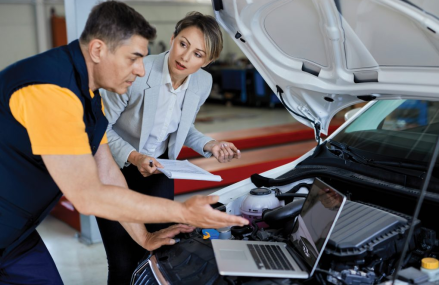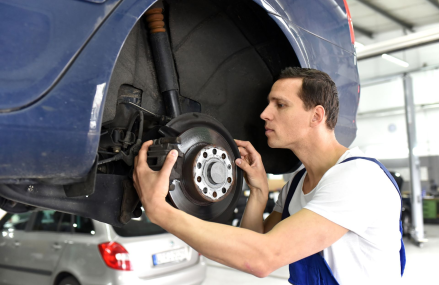A pre-trip walkaround and visual inspection are key to maintaining your vehicle’s brakes. A regular brake fluid change is another vital element. During your routine maintenance session, your brake fluid will be inspected for the correct level and moisture content. Brake fluid should be replaced every couple of years to guarantee that boiling caused by water-saturated fluid does not compromise brake performance. Regular brake services West Palm Beach, FL, will keep them clean and performing as designed, giving you lengthy brake pad life and confidence while braking.

Pre-Trip Walkarounds
Pre-trip walkarounds for brake maintenance involve checking for issues, whether the vehicle has a problem or not, before heading out on the road. This inspection should start as you approach your vehicle and look for obvious problems, such as fluid on the ground or damage to the vehicle’s body. For example, if your car is leaning to one side, it could mean that you have a flat tire or other suspension issues.
When conducting a pre-trip walkaround for brake maintenance, drivers should pay close attention to the air chambers, hoses, and pushrods. They should also listen for unusual noises and leaks in the air system. In addition, the slack adjusters should be extended to the same angle on both axles; if they are not, that could indicate a problem. If slack adjusters are not extended to the same angle on both axles, that could indicate a brake that is out of adjustment or a broken power spring.
Visual Inspections
The first step in proper brake maintenance is performing regular visual inspections. Look for loose-hanging pushrods, out-of-adjustment brakes, and slack adjusters. These are all indicators of an under-adjustment problem and could result in less stopping power. In addition to fluid levels, check the brake rotors and air discs weekly. Monthly inspections should include checking for moisture in the air system, which can cause corrosion of the air seals and brake chamber diaphragms.
Using a power-assisted system, test the hydraulics by depressing the brake pedal with moderate foot force for 10 seconds. Next, you must ensure the brake pedal moves when the engine starts. You should also check the brake fluid level and leaks. Lastly, make sure that the brake pedal is at the correct height. If it doesn’t, the brake pedal might be too high.
Checking for Leaks
Check for light yellow or brown fluid around the vehicle to diagnose a brake leak. If you notice such a puddle, the problem is most likely related to brake fluid leaks. Depending on where you see the puddle, the problem could be related to other braking system components, such as the brake booster or master cylinder. Again, it would help if your vehicle was serviced by a qualified mechanic.
Small leaks may be difficult to detect. They may seep through small cracks in the hose or seal. The brake master cylinder is also vulnerable to brake fluid leaks. It would help if you got under your vehicle to inspect it carefully. If you find a small leak, use a flashlight to improve visibility and try to drive a small amount of brake fluid through it. A small leak can also be the source of a more severe leak, resulting in a car accident.
Changing Brake Fluid
Changing brake fluid is the first thing you should do when your car has stopped working. You should do this every two years, or more often if you have a habit of braking suddenly or stopping and going. It is also a good time to check the brake pad and the caliper for any signs of wear. Also, if the brake pedal becomes soft or spongy, it’s time to replace it.
Your owner’s manual specifies the type of brake fluid used in your car. Check the owner’s manual for the recommended intervals to change it. Different brake fluid types are incompatible, so make sure to use the right kind before starting work. Changing brake fluid is not expensive. Generally, you’ll need two or three 12-ounce cans of brake fluid. In addition, you should purchase a brake fluid bottle containing at least a hundred milliliters for more fluid.



